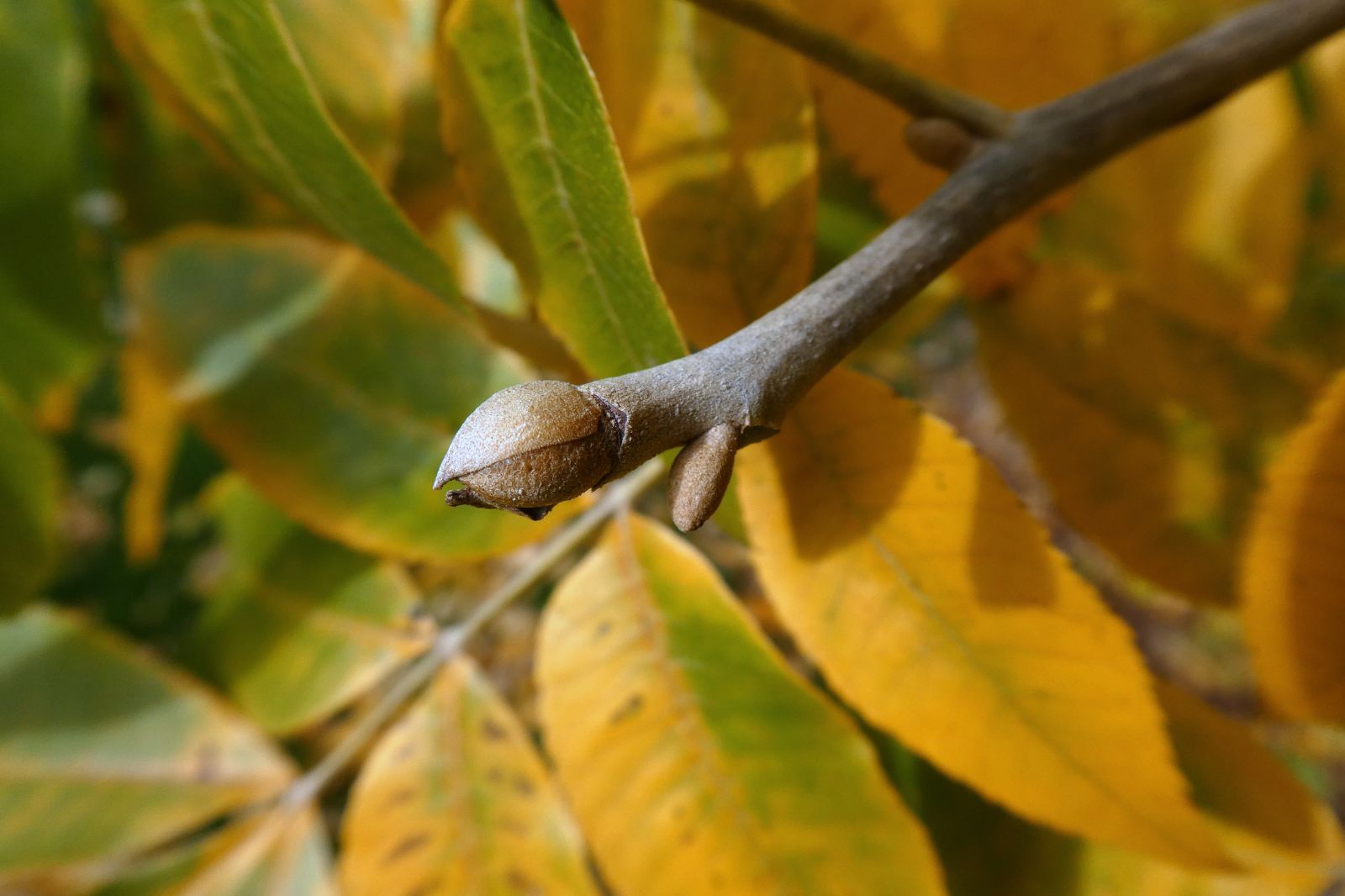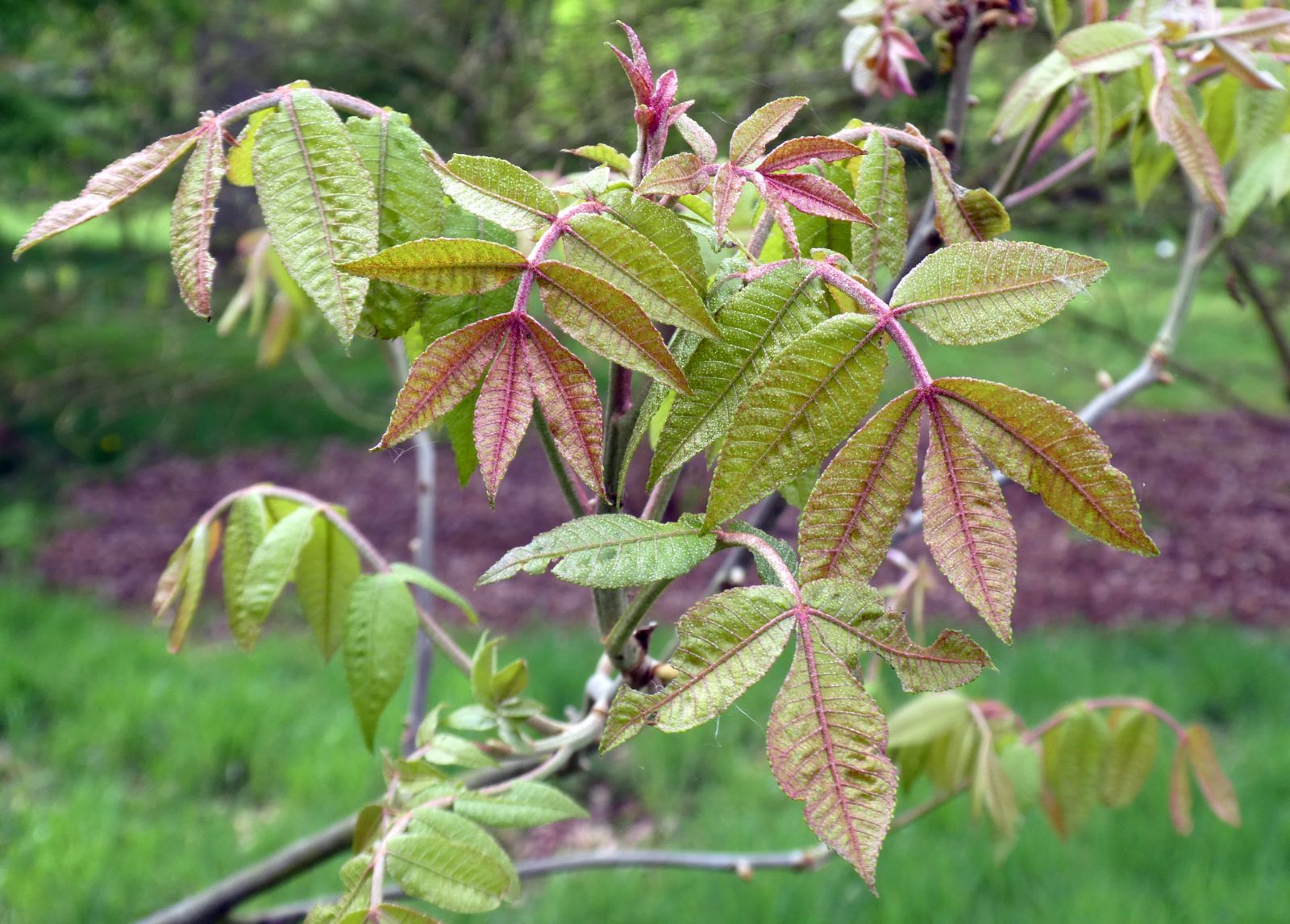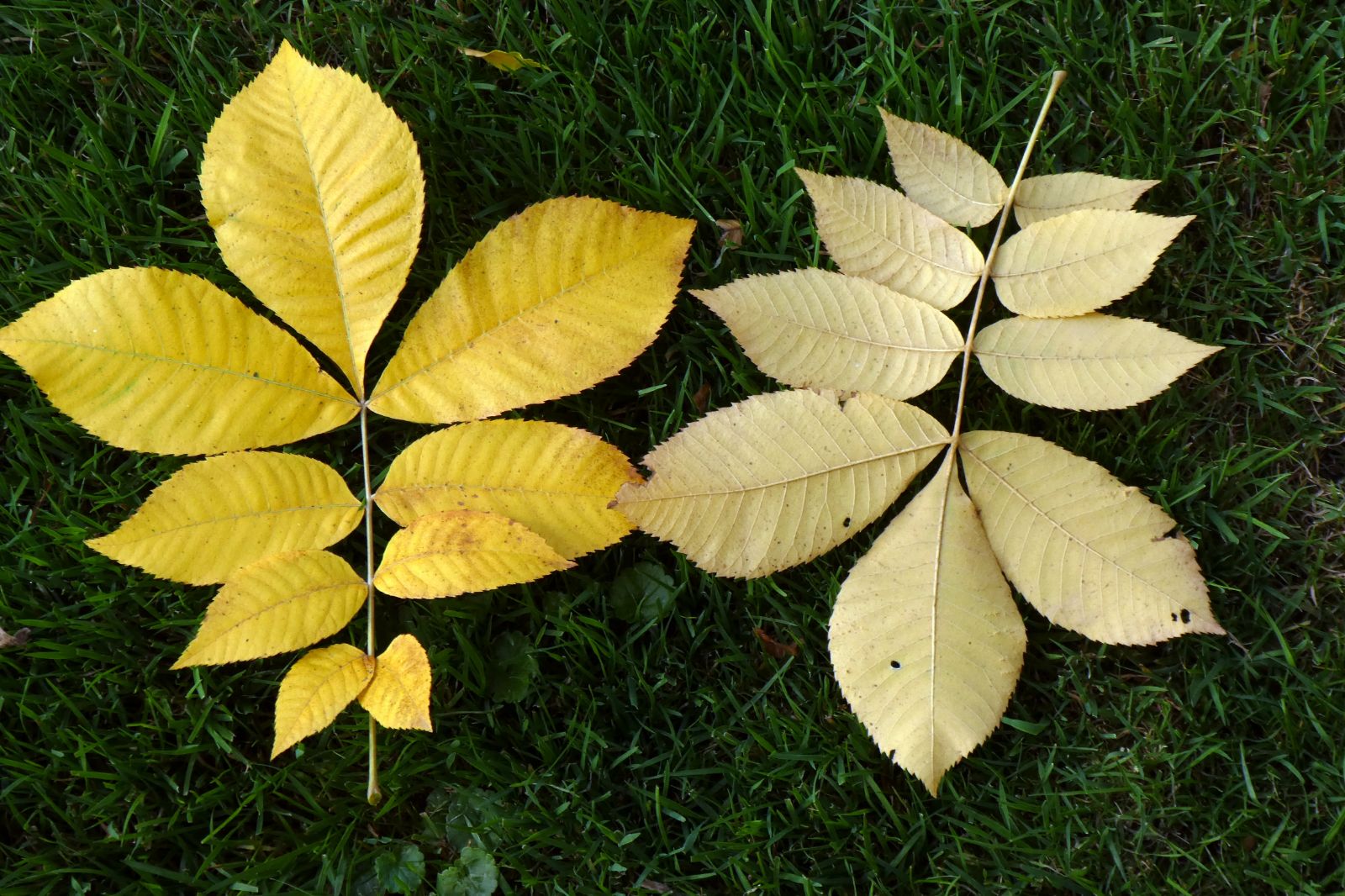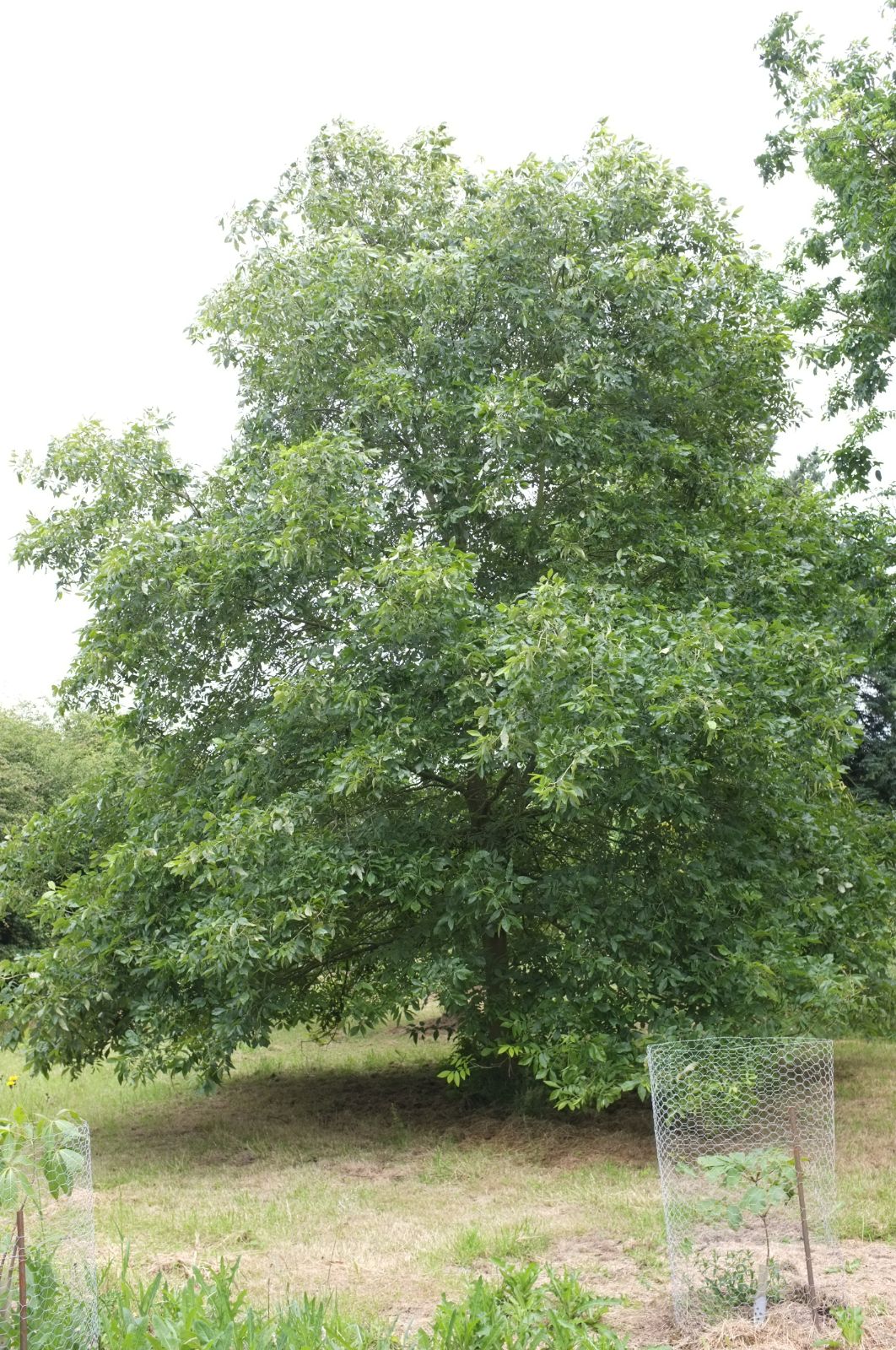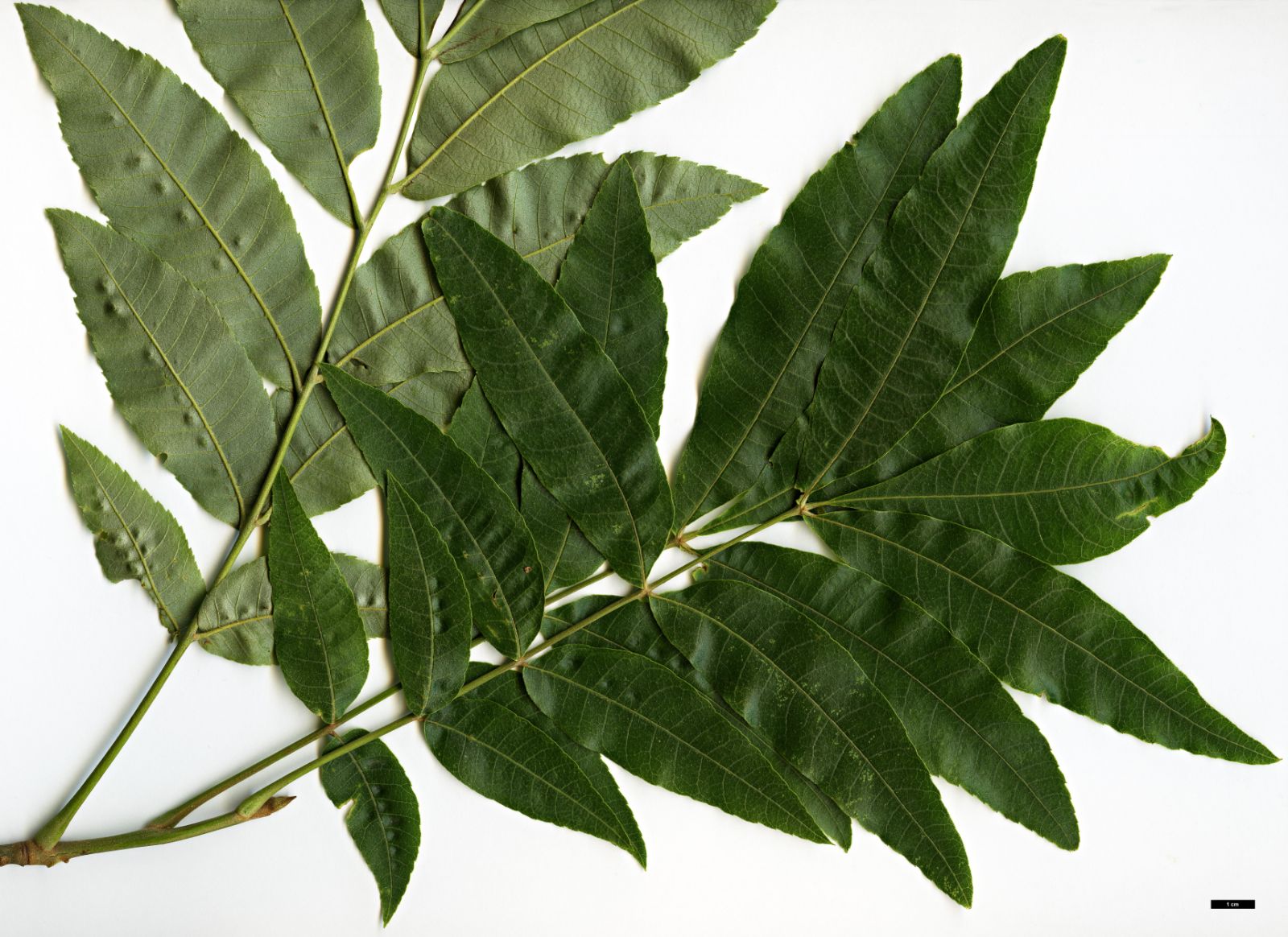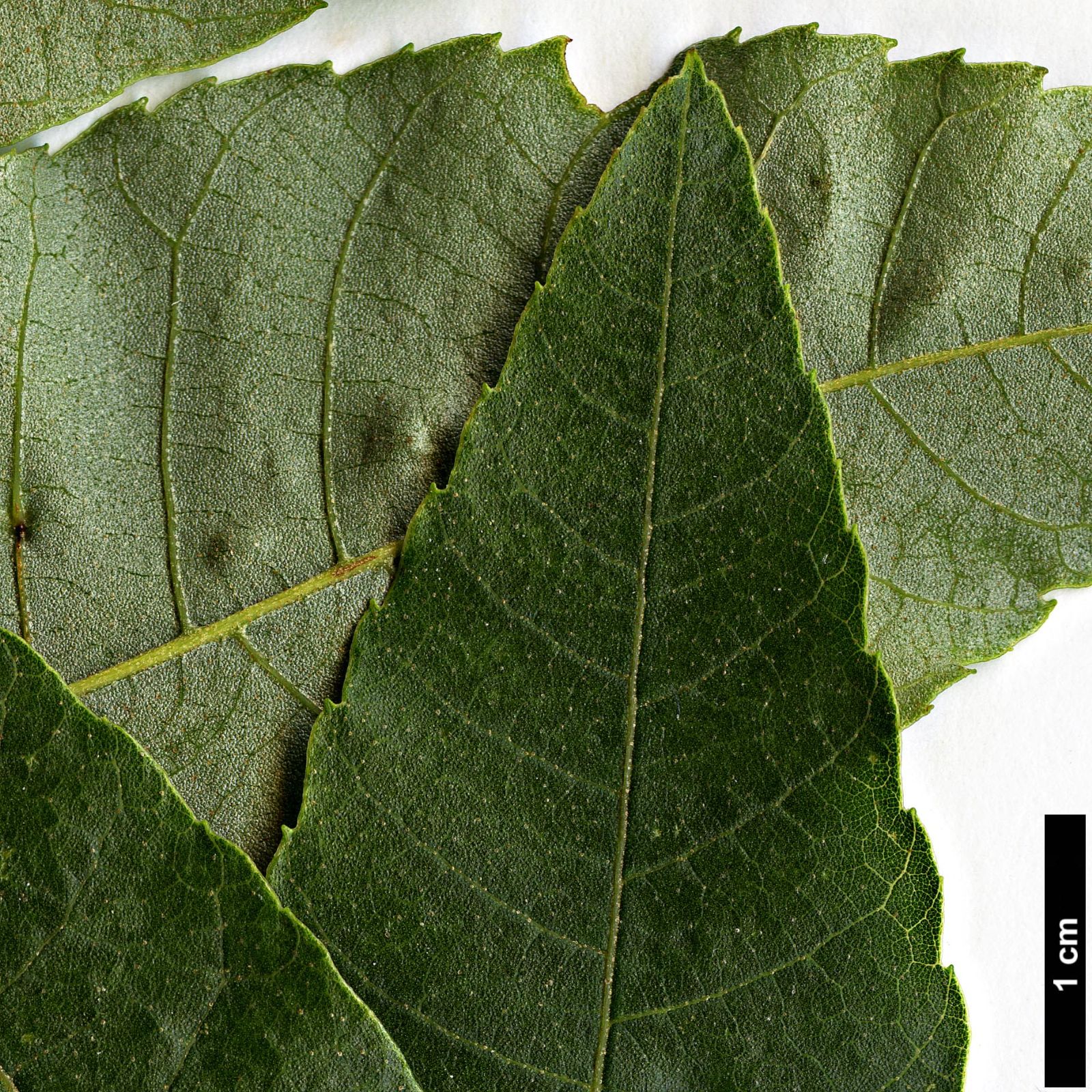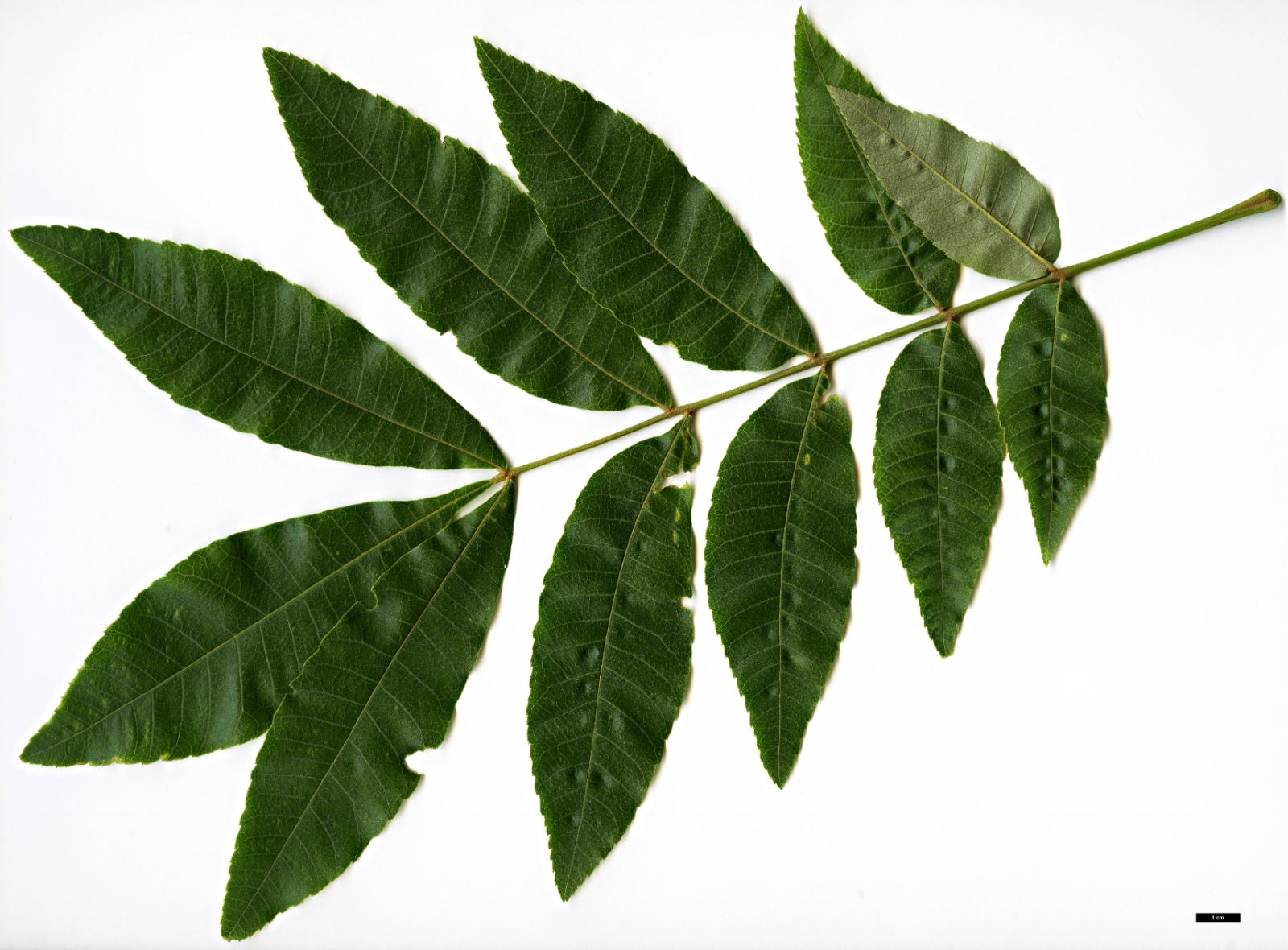Carya myristiciformis
Sponsor
Kindly sponsored by
a member of the International Dendrology Society
Credits
Julian Sutton & Dan Crowley (2020)
Recommended citation
Sutton, J. & Crowley, D. (2020), 'Carya myristiciformis' from the website Trees and Shrubs Online (treesandshrubsonline.
Potentially large tree to 35 m in the wild. Bark grey to brown, fissured or exfoliating in long strips or broad plates. Branchlets bronze to brown, slender, glabrous, densely scaly. Terminal bud ovoid, largely glabrous, 0.4–0.6 cm long, bronze. Leaves deciduous, imparipinnate, 17–36 cm long; leaflets (5–)7–9(–11), ovate or obovate to elliptic, 3–17 × 1–8 cm, upper surface pubescent along midvein and primary veins at first, with scattered peltate scales; lower surface with simple and 2–4-armed stellate hairs along midrib at first, dense with large, peltate scales and smaller, irregular, round and 4-lobed peltate scales, silvery-white to bronze; margins finely to coarsely serrate, apex acuminate; lateral petiolules 0–0.2 cm long, terminal petiolules 0.2–0.3 cm; petiole and rachis densely scaly; petiole 3–10 cm long. Male catkins to 6 cm long, scaly. Fruits tan to bronze, 2–3 × 1.5–2 cm, obovoid to ellipsoid, splitting to the base; nuts ellipsoid, sooth. (Bean 1976; Stone & Whittemore 1997; Grauke 2003).
Distribution Mexico Nuevo León United States South east, scattered and rare from Texas to North Carolina, absent from Florida
Habitat Bottomlands and streamsides, sometimes on bluffs and hillsides; 0–500 m.
USDA Hardiness Zone 7-9
RHS Hardiness Rating H4
Conservation status Least concern (LC)
Nutmeg Hickory is a most uncommon tree, both in the wild and in cultivation. Intermediate in character between the true and pecan hickories, it has the potential to make handsome landscape specimens.
The rarest member of the genus in the wild (Stone & Whittemore 1997), Carya myristiciformis occurs as scattered stands across its range (Sternberg 2004). Typically found in moist but reasonably well drained sites, it is common only in Dallas County, Alabama and parts of southern Arkansas (Maisenhelder & Francis 1990). Interestingly, its distribution quite closely matches that of Quercus sinuata, and these species may be relicts of an earlier, more widespread vegetation type.
Scales on the undersides of the leaves give them a conspicuous silvery sheen, especially in spring, contrasting with the green upper surface. Flashes of silver when the canopy is stirred by the wind persuade Grauke (2003) that this is the most attractive hickory. The number of leaflets is in practice very variable. The fruits too are distinctive, almost spherical, red-brown and striped silver (Grauke 2003). Their resemblance to Myristica fragrans, the Nutmeg, gives rise to both the common name and the specific epithet. The nuts are small and sweet, but have thick shells. Squirrels take them, beginning when they are still green (Maisenhelder & Francis 1990) but Grauke (2003) reports that they often remain lying near the parent tree in quantity.
Carya myristiciformis occupies an ambiguous position between the true hickories and the pecan hickories (Sargent 1918), with some features of each group, although it is usually included with the true hickories in Section Carya. Like the pecan hickories it has valvate bud scales and a thin husk, but has the thick shell and relatively few leaflets of the true hickories.
Carya myristiciformis was first described in the early 19th century from specimens collected by François Michaux. Bean (1976) stated its date of introduction to the United Kingdom as 1911 and considered it slow-growing but hardy at Kew. No trees of this vintage remain in Europe. Kew’s only living specimen was received in 1972 from the Morton Arboretum. In stature it challenges the UK Champion, which grows at Westonbirt and measured 9 m tall in 2014 (The Tree Register 2019). This is one of a pair of trees that were received by Westonbirt in 1978, though the source is unrecorded. Slow-growing, these plants appeared desperately unhappy for many years (Hugh Angus, pers. comm. 2018) though are now quite healthy, with an attractive silvery sheen to their lower leaf surfaces. At least one specimen of broadly similar size grows at the Arboretum Wespelaar, Belgium (Arboretum Wespelaar 2019).
Plants grown from seed collected from Georgia’s only population, in the flatwoods of Floyd County in October 2014 (WECA 50) are establishing well at Westonbirt. The tallest stood 90 cm tall in December 2018 (A. Vry, pers. comm. 2018). The Floyd County population was discovered as recently as 1999 (Ware 2012) and contains trees over 30 m tall, although it is reported to become larger still in Mexico (Sternberg 2004).
Nutmeg Hickory is very rarely seen in North American collections, but has been grown at the Arnold Arboretum, Massachusetts, for over 100 years. As well as trees from later introductions, one specimen survives from a 1909 collection by Charles Sargent in Arkansas (71 cm dbh, fair condition in 2016 – Arnold Arboretum 2019).
As saplings only, this is one of the more shade tolerant hickories (Sternberg 2004). It has a long taproot, so the usual issues around transplanting hickories apply. Autumn colour is a good yellow.


